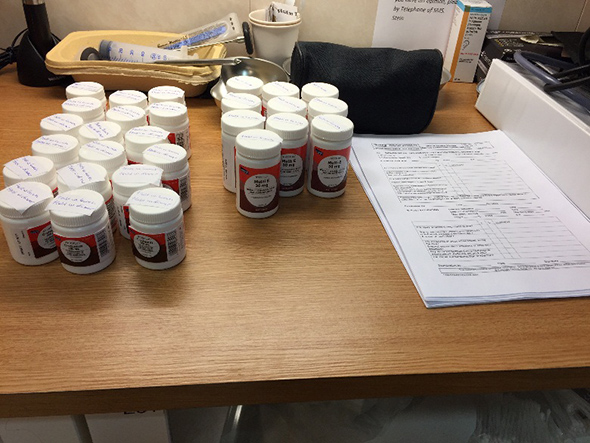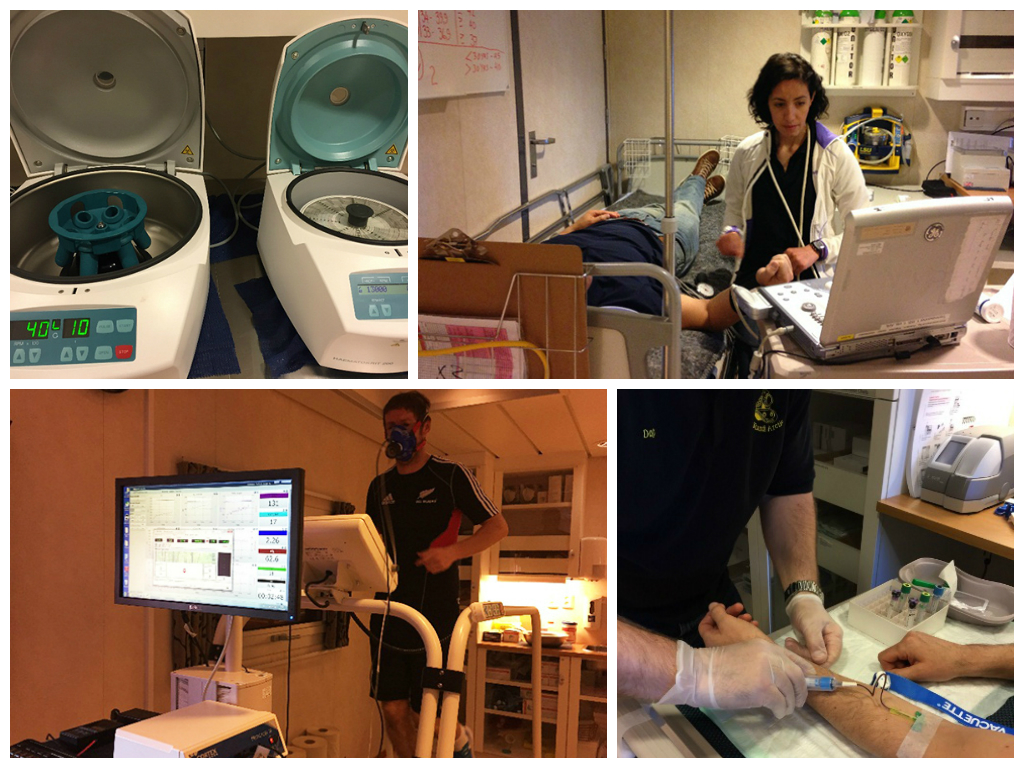Blogger: Fatima Zohra Kiboub
Industrial PhD Candidate, Lead QHSE Engineer, Technip
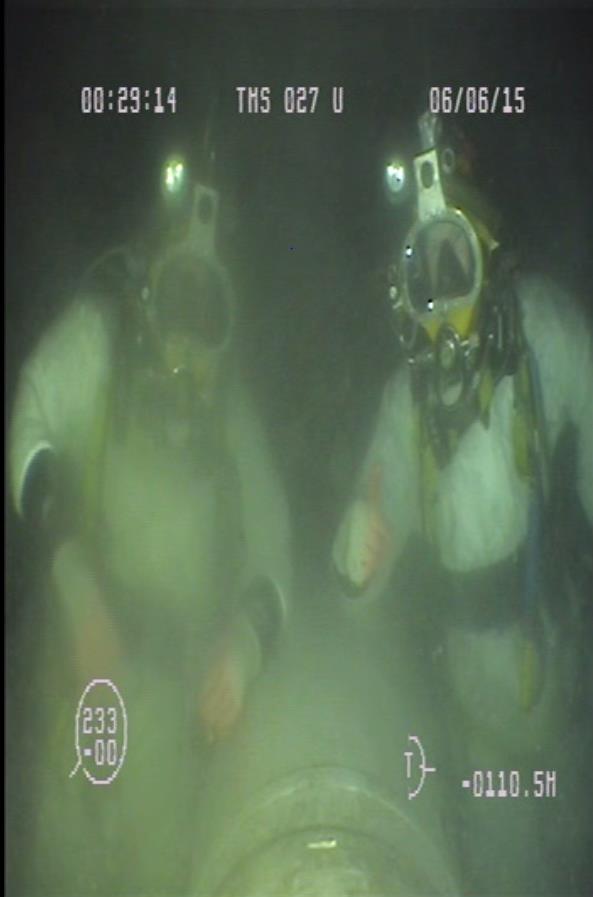
The working environment, health and safety of an offshore diver has significantly improved since the 1990s and saturation diving is today among the safest offshore occupations.
Crucial to our gas and oil industry, the offshore divers perform their work on the ocean floor of the Norwegian continental shelf. Not unlike the astronauts, these divers – the aquanauts – encounter environments that challenge the body’s capacity for adaptations. We look at how their bodies respond and what makes them fit and healthy.
Saturation diving is a very challenging job and the divers have to be extremely fit and healthy. The divers live at an elevated atmospheric pressure inside a pressure chamber, which is equal to the pressure at the water depth they will work at. They breathe a mixture of helium and oxygen called Heliox, which makes their voices sound like Mickey Mouse!
When working at depths of 50-180 metres, it is dark and the seawater is very cold – around 4-8°C. The divers are therefore dressed in neoprene wet suits where heated seawater is pumped through to keep them warm. It is like floating in a heated spa pool. They wear a helmet, wellington boots and rubber gloves, which could be mistaken for dishwashing gloves.
Many research projects have been conducted with recreational divers and also offshore air divers, but there are not many research projects on offshore saturation diving – and even less research done with real-life saturation divers in their own working environment.
New science indicates that the high-pressure working environment makes the body initiate an inflammatory reaction, with possible release of stress biomarkers into the blood stream. This is of course closely linked to the function of the vascular system. This gave us the idea to not only study the effects of diving on the vascular system and how the body adapts to such conditions; but also how to improve the long-term health monitoring.
The main part of my PhD project is to see if the intake of antioxidants in the form of vitamin C and E will reduce the stress biomarkers found in the blood of saturation divers. The participating offshore divers will be given vitamins every day whilst living in the pressure chamber and blood samples will be taken before entering and upon leaving the chamber. The results will be compared with a control group not taking vitamins.
After obtaining the approval of my employer, Technip – which performs subsea construction work for the oil & gas industry; and after securing funding from the Norwegian Research Council and the necessary ethical authorisation to perform research on humans, I could start my PhD research at the Medical Faculty at NTNU doing data- and samples collection during the 2015 offshore season.
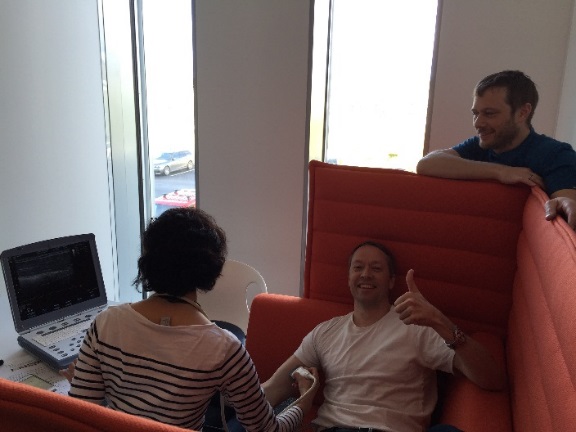
Here you can see my manager Morten in the improvised ultrasound testing room and Andreas in the back making sure that the FMD protocol was followed properly.
Before going offshore, one of my PhD supervisors, Andreas Møllerløkken, provided training on how to use an ultrasound machine to run a test called Flow Mediated Dilation (FMD). This test measurers how much a large artery of the arm can expand after the blood flow has been reduced for 5 minutes using an inflated blood pressure cuff. FMD is a much used indicator of vascular health. We used my office colleagues as guinea pigs in order to practice before going offshore.
We also obtained the centrifuges and cooling transportation boxes required for our mission, and on 2nd June, it was time for the fun part of the project to begin!
My main supervisor, Ingrid Eftedal, and I took all the equipment to the hospital on board the Skandi Arctic Dive Support Vessel. We received a warm welcome by all the crew, and by the end of the first day, we had already tested two divers.
The divers had joined the vessel by 6th June. They all went through the medical pre-dive check and some were also due to have their annual direct oxygen uptake (VO2max) test.
Initially, eight divers agreed to participate in the project, and we took their blood samples and ran FMD tests. It was a great relief to actually get started.
As the blood samples also will be used in two other research projects run by the barophysiology group at NTNU, we are taking four test tubes of blood from the divers and 3 from the non-divers to study different paramenters. This has earnt me the nichname ‘The Vampire’, although it is the nurse taking the actual samples!
We centrifuge the tubes with blood and anticoagulant to separate the plasma into tubes for freezing and later analysis at the NTNU laboratory.
We also measure percentage of red blood cells onboard, and record the results in our log sheet.
In addition to ‘normal’ health check such as taking the blood pressure, we ran FMD test using an ultrasound machine in combination with an electro cardiogram (ECG). This test shows how much the brachial artery in the arm can expand after 5 minutes of pressure in the forearm. It is a good indicator of artery elasticity reflecting vascular health.
The divers who were due to take their annual VO2max test, measuring the maximum oxygen uptake in the blood, were running on the onboard treadmill placed within the vessel’s hospital.
I have to say it is not easy to work when the ‘ground’ is moving in all directions all the time, but when the sea calmed down enough, it was safe for the divers to run on the treadmill. All our non-divers also passed the test with extremely good results – it is amasing how fit these guys are despite varying lifestyles and age groups!
In fact there is a bit of jovial competition around the VO2max tests. And the vessel has several provisions for staying active with half a basketball pitch, golf course simulator, boxing gym, table-tennis room and a darts board in addition to the two gyms.
On 9th June there was a crew change, another four of the divers agreed to participate in the project. As one of my biggest concerns has been to get enough divers to participate and to be able to do the tests as planned, I was very pleased about this.
By the 14th June, the campaign was completed and we headed back to Stavanger. Here I did a full handover to the new nurse, who would perform the tests on the batch of divers coming out of decompression on the 15th. The day after, a new team of divers arrived, and most of them agreed to participate thanks to the efforts of our crewing office in Aberdeen.
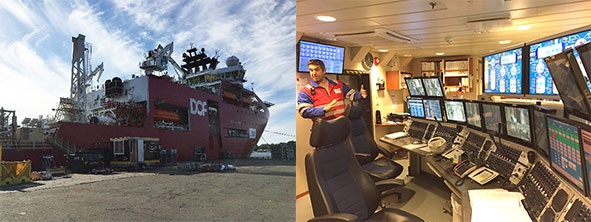
The diving chambers control room onboard the Skandi is there to keep the divers safe inside the pressurised chambers until they are decompressed back to surface pressure again – a process that can take 2-10 days depending on the depth the divers have been working at
In July I will sign on again, and if all goes well, I will be done with all the sampling and diver testing by mid-July, just in time to spend Ramadhan in Stavanger. In the autumn I will analyse the blood samples and test results, and hopefuly we will be able to share some early results with the Skandi Arctic crew presenting the results to those that partcipated or otherwise have shown an interest in our work.
Working offshore has its challenges including seasickness and a working environment in constant motion. Although phone signals were patchy I managed to get in touch with my family in Algeria and tell them their Saharan girl was having a blast in the middle of the North Sea!
Fatima Zohra Kiboub is a Lead QHSE Engineer at Technip and is doing an industrial PhD with the barophysiology group at the Deparment of circulation and medical imaging (ISB) at NTNU.
Want to know more about life onboard the Skandi Arctic? Check out this video.

